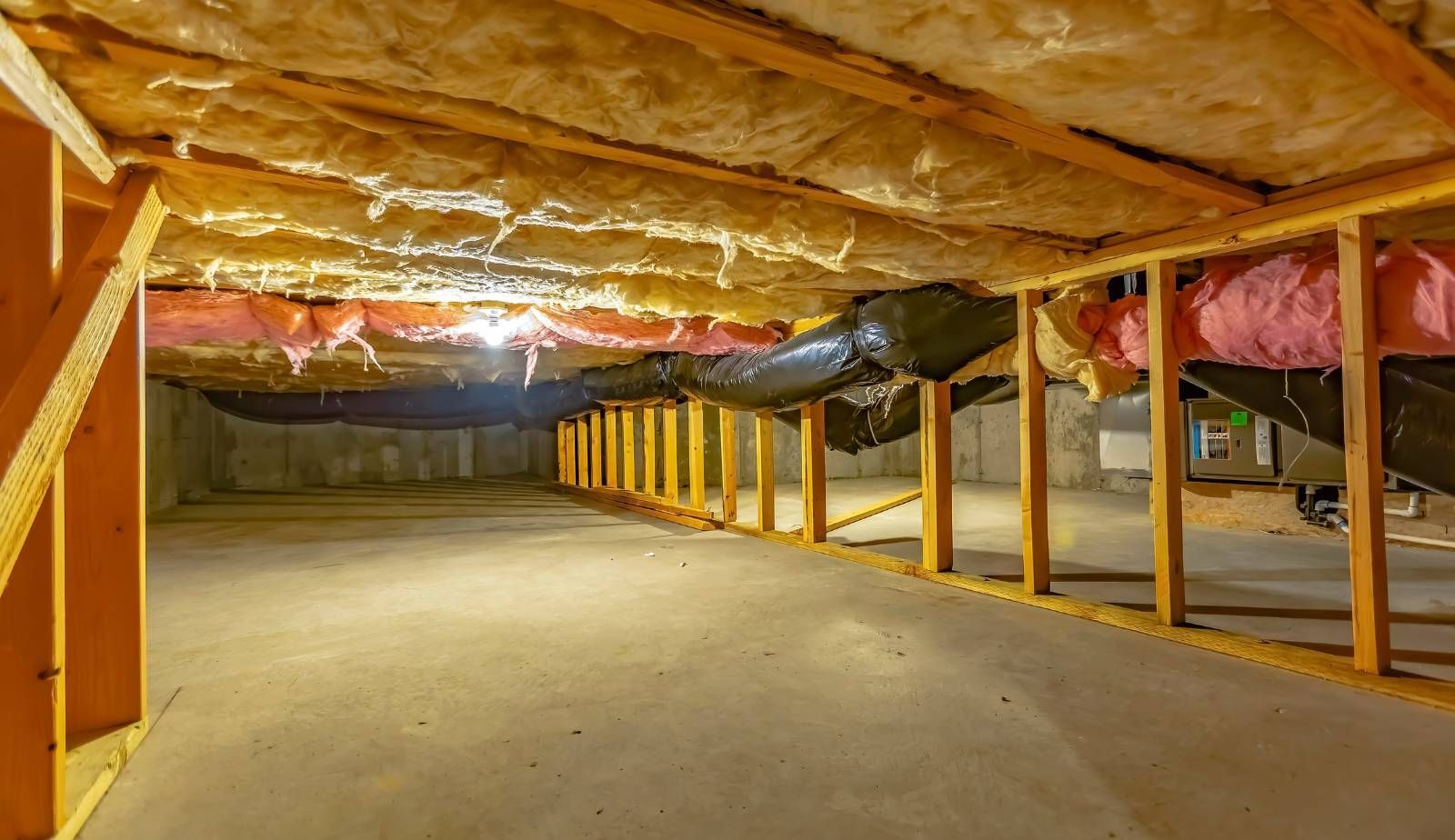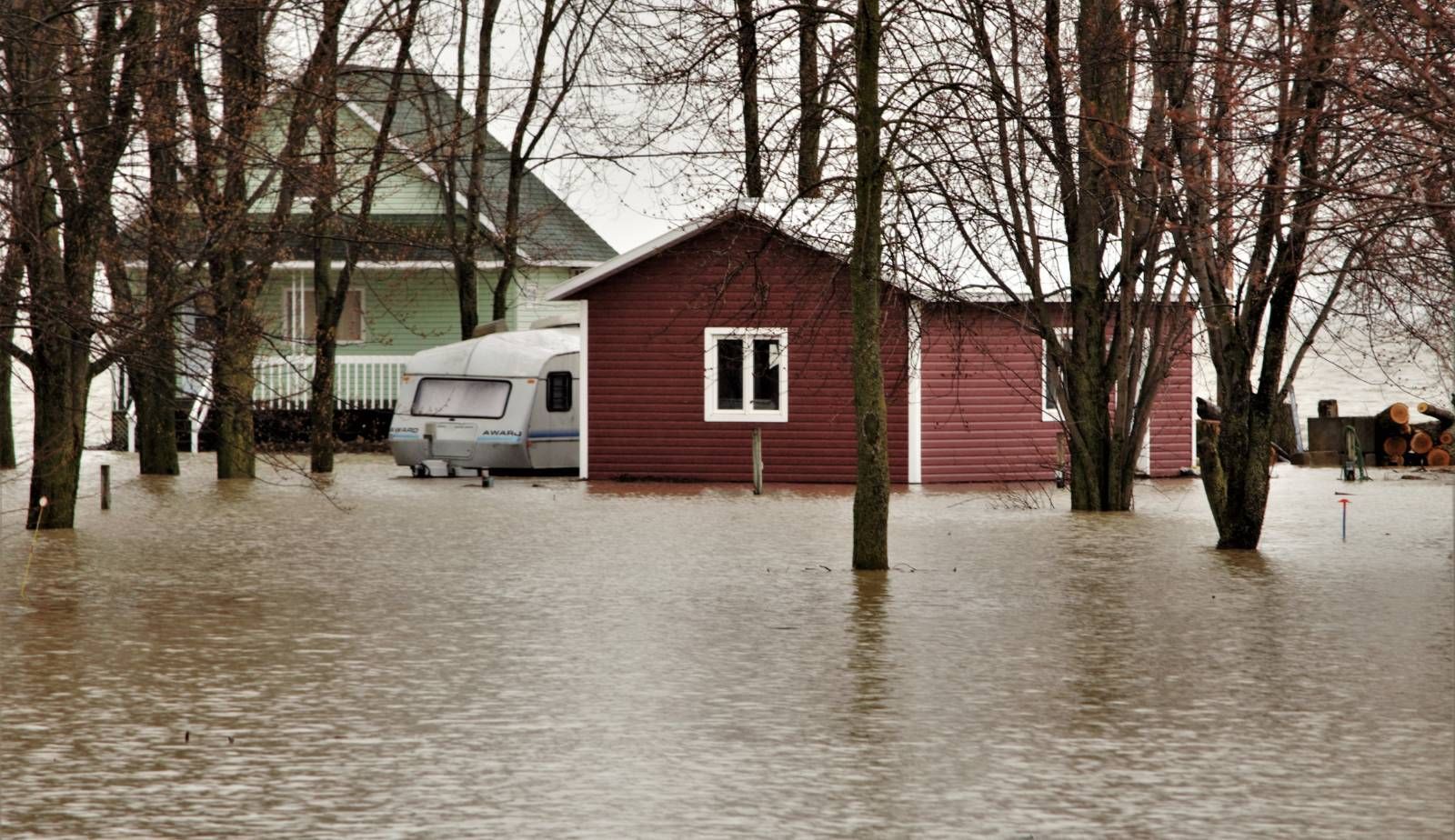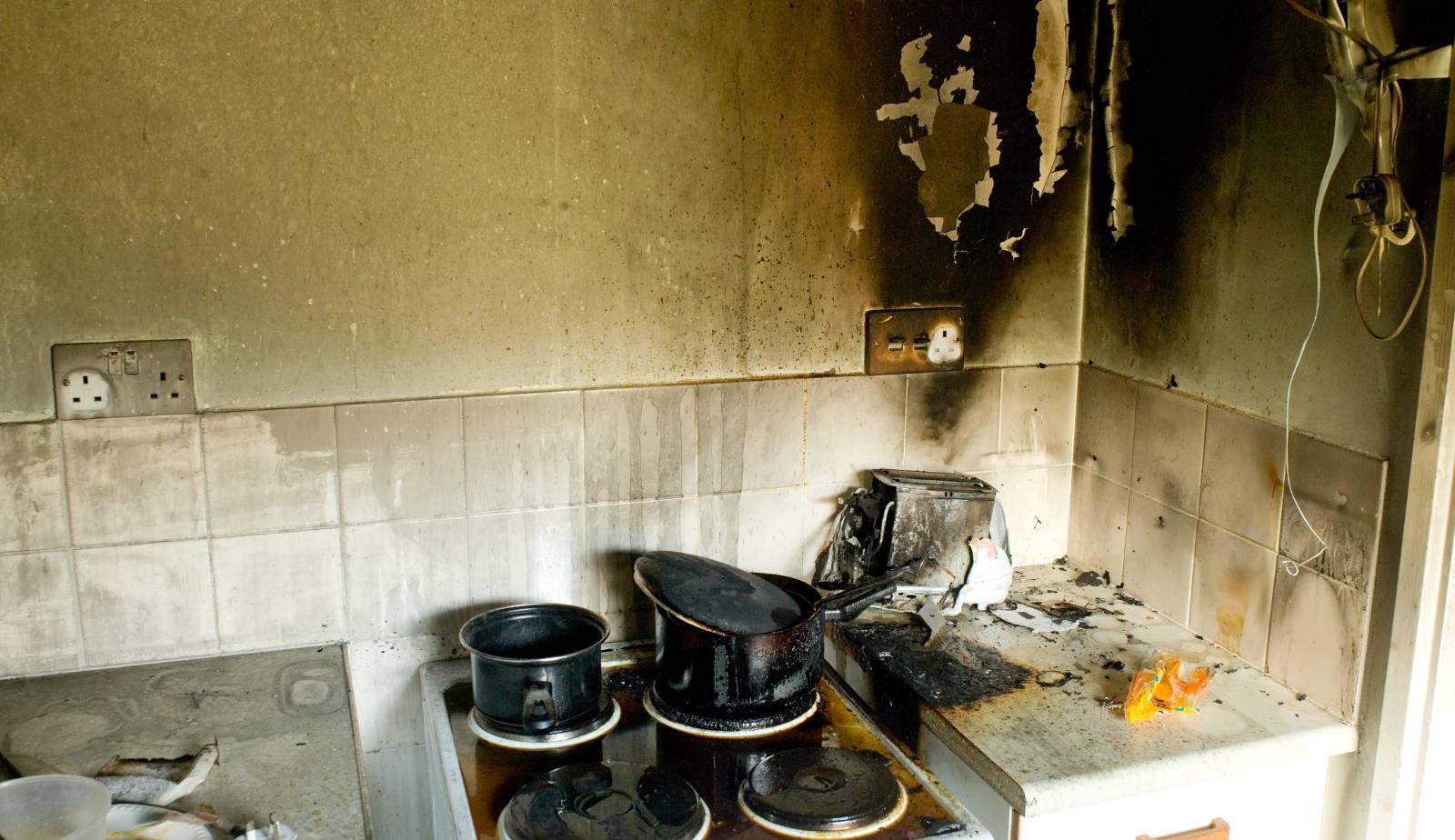Resilient Building Materials for Louisiana Homes: Strengthening Structures Against Water and Fire Damage
In a region like Louisiana, where residents face the constant threat of hurricanes and flooding, selecting the right building materials can significantly impact the resilience of homes against natural disasters. Various innovative materials and construction techniques have emerged, designed specifically to withstand harsh climatic conditions. By integrating flood-resistant and fire-resistant materials, homeowners can enhance their properties' ability to endure the challenges posed by extreme weather events.
Building resilience is not just about fortifying structures; it also involves utilizing sustainable practices that lessen environmental impact while protecting against damages. Louisiana's unique climate demands materials that handle humidity and rain effectively, along with fire-retardant options that offer safety during wildfire seasons. Homeowners and builders alike are increasingly prioritizing choices that ensure longevity and safety in an uncertain climate landscape.
Investing in resilient building materials is a proactive approach toward safeguarding homes and securing a family’s future in the face of natural disasters. As awareness grows about the benefits of such materials, the construction industry in Louisiana is evolving, making strides toward more durable, eco-friendly homes that can better withstand the realities of the region.
Resilience in Louisiana
Louisiana faces significant challenges due to its climate and geography. The state is susceptible to extreme weather events, making resilience in construction essential for protecting homes and communities.
Historical Climate Challenges
Louisiana's location along the Gulf of Mexico exposes it to numerous climate challenges. The state routinely experiences hurricanes, which can bring devastating winds and flooding. Notable storms, like Hurricane Katrina in 2005, reshaped the conversation on resilient housing.
In addition to hurricanes, the region deals with heavy rainfall, which can lead to severe flooding. These factors have prompted the Louisiana Housing Corporation to advocate for stronger building codes and resilient construction practices. Climate change has exacerbated these issues, contributing to the intensity of storms and unpredictable weather patterns.
Recent Disasters and Their Impact
The impact of recent disasters on Louisiana's infrastructure is profound. Hurricane Ida in 2021 demonstrated the vulnerability of homes and commercial buildings to high winds and water damage. The storm caused significant destruction, prompting community leaders to reassess current building methods.
In the wake of disasters, the focus has shifted to constructing homes that can withstand extreme weather. The advocacy for adopting resilient building materials is growing, with organizations emphasizing sustainable practices and stronger design techniques. This shift aims to not only protect residents but also promote long-term recovery and stability in the housing market.

Understanding Resilient Building Design
Resilient building design is essential in regions like Louisiana, where homes face threats from water and fire damage. Key principles focus on structural integrity and safety, emphasizing techniques that enhance durability and protection.
Key Principles of Resilience
In resilient building design, several principles stand out. Robustness ensures that structures can withstand extreme weather events, such as hurricanes. This involves using materials like reinforced concrete and impact-resistant glass.
Resourcefulness refers to adaptability, enabling structures to cope with changing conditions over time. Utilizing redundancy in structural elements provides backup support, while rapid recovery focuses on designing homes that can be quickly repaired after damage.
Incorporating these principles into a home design enhances its lifespan and adds value. Builders should consider local climate challenges when selecting materials and techniques to ensure resilience against specific threats.
Incorporating Safe Rooms and Continuous Load Paths
Safe rooms are an integral part of resilient design, providing secure spaces within homes. Constructed to withstand strong winds and impacts, they are typically built with reinforced walls and ceilings. These rooms offer families refuge during severe weather events.
Continuous load paths enhance structural integrity by ensuring that loads are evenly distributed throughout the building. This method integrates various structural components—such as walls, floors, and roofs—allowing them to work together effectively during stress.
Using these techniques minimizes the risk of structural failure, especially in high winds or flooding scenarios. Both elements significantly contribute to a home’s ability to stand strong against natural disasters.
Material Considerations for Resilience
Choosing the right building materials is essential for enhancing the resilience of homes in Louisiana. This involves not only understanding advanced material options but also selecting those that promote sustainability and energy efficiency.
Advanced Material Selection
The use of impact-resistant concrete is crucial in areas prone to flooding. This material not only withstands water damage but also offers significant structural integrity against high winds and debris during storms.
Insulation plays an important role in moisture management. Closed-cell spray foam insulation, for example, prevents water infiltration and serves as an effective vapor barrier. It helps maintain interior temperatures, which is vital in Louisiana's humid climate.
Incorporating fire-resistant materials such as fiber cement siding can further bolster a home's resilience. These materials resist ignition and can serve to protect against wildfires, which are becoming more frequent.
Sustainable and Energy-Efficient Materials
Sustainable practices are becoming imperative, especially in hurricane-prone regions. Using locally sourced materials reduces transportation impacts and supports the local economy.
In addition, integrating energy-efficient windows that meet high-performance standards can significantly improve natural ventilation. This allows for better air circulation and reduced reliance on mechanical cooling systems.
Recycled materials in construction, like recycled steel, not only minimize waste but also often possess enhanced durability. These choices contribute to building houses that can adapt to both environmental challenges and energy demands effectively.
Emphasizing sustainable choices alongside advanced material selection will better prepare Louisiana homes for the climate challenges they face.

Adaptable Building Techniques
Utilizing adaptable building techniques is essential in ensuring homes in Louisiana can withstand water and wind damage. These methods focus on specific materials and strategies designed to enhance resilience against environmental challenges.
Water-Resistant Construction Tips
In regions prone to flooding, water-resistant construction is vital. Here are some effective strategies:
- Elevated Foundations: Building homes on raised foundations helps prevent water intrusion during heavy rains or floods.
- Water-Resilient Materials: Using materials such as fiber-cement siding and pressure-treated wood can protect against moisture damage.
- Flood Vents: These allow floodwaters to enter and exit a building, reducing structural pressure and potential damage.
- Sealing and Insulation: Ensuring proper sealing around windows and doors enhances waterproofing. Insulated concrete forms (ICFs) are excellent for walls, providing both insulation and moisture resistance.
Implementing these tips significantly enhances resilience against flooding in Louisiana homes.
Techniques for Wind Damage Prevention
Wind damage poses a significant risk in Louisiana, particularly from hurricanes. Effective techniques include:
- Roof Design: Roofs should have a pitch that can better deflect wind. Hip roofs are often more resilient compared to gable roofs.
- Impact-Resistant Materials: Using wind-resistant windows and doors helps minimize breakage during storms. Laminated glass and storm shutters are effective options.
- Strapping and Ties: Installing metal straps and ties to connect the roof to the walls strengthens the building's overall structure.
- Landscaping Strategies: Employing windbreaks, such as trees, can reduce wind speed before it reaches the home.
These techniques are essential for enhancing the structural integrity of buildings and ensuring they withstand extreme weather conditions.
Regulations and Building Codes
Building regulations and codes play a vital role in ensuring that homes in Louisiana are resilient against water and fire damage. Understanding these regulations helps homeowners and builders make informed decisions that prioritize safety and durability.
State and Federal Code Compliance
In Louisiana, adherence to state and federal building codes is essential for any construction project. These codes are designed to address specific risks, including flood damage, and incorporate recommendations from local authorities.
The Louisiana State Uniform Construction Code (LSUCCC) mandates compliance with various standards, ensuring structures can withstand extreme weather conditions. Key factors include:
- Flood-resistant designs: Homes must include elevated foundations and proper drainage systems to mitigate flood risk.
- Material standards: Used materials should comply with regulations that enhance fire resistance and durability.
These codes are regularly updated to incorporate contemporary practices, ensuring the construction industry remains proactive against evolving threats.

Understanding the Fortified Standard
The Fortified Standard offers a comprehensive approach to building resilient homes. Developed by the Institute for Business and Home Safety, this standard emphasizes construction practices that improve structural integrity in adverse weather conditions.
Key components of the Fortified Standard include:
- Strengthened roofs: Installation of fortified roofs that can withstand high winds.
- Enhanced wall systems: Use of resilient materials that resist damage from water and fire.
Homes built to this standard are likely to receive benefits from insurance companies, making them a preferred choice for homeowners seeking long-term protection. Adopting the Fortified Standard aligns closely with Louisiana's commitment to address regional vulnerabilities effectively.
Benefits of Natural Disaster Preparedness
Preparedness for natural disasters yields significant advantages, particularly through economic resilience and enhanced community safety. Implementing robust building materials and techniques leads to a stronger infrastructural framework, reducing long-term costs and protecting lives.
Economic Impact of Resilient Structures
Investing in resilient building materials is economically beneficial. Structures designed to withstand severe weather events, such as floods and high winds, minimize long-term damage costs. For instance, utilizing flood-resistant techniques can significantly reduce structural damage, thereby lowering repair expenses and insurance premiums.
Tax credits are often available for homeowners who invest in resilient building practices. These financial incentives encourage more sustainable construction and renovations. Additionally, resilient structures can increase property values, as buyers prioritize homes that demonstrate reduced risk of damage from natural disasters.
Enhancing Community Safety
Resilient building practices significantly enhance community safety by reducing the potential for structural failure during disasters. Homes equipped with fire-resistant materials, for example, can protect residents from the dangers of wildfires, ensuring they have a secure refuge.
Furthermore, developing flood-resistant homes contributes to overall neighborhood safety by preventing water damage that can lead to mold and other health hazards. Increased community preparedness fosters a sense of security, ensuring that families can quickly recover and rebuild after an event. The focus on resilience not only protects individual homes but fortifies entire communities against future threats.
Resilient Building Practices Across the Globe
Resilient building practices are being adopted worldwide to combat the challenges posed by climate change and urbanization. These practices emphasize materials and methods that enhance resistance to environmental hazards, such as water and fire damage.
Case Studies of Global Best Practices
In Australia, the implementation of bushfire-resistant building standards has become crucial in areas prone to wildfires. Homes are constructed with non-combustible materials such as steel and concrete. Roof designs are sloped to reduce the accumulation of leaves and debris.
In Japan, flood-resistant construction techniques are widely adopted. Elevated homes and barriers designed to redirect water can be found in flood-prone areas. These practices are essential in managing heavy rain and storm surges, protecting both lives and property.
Local Adaptations and Innovations
In Baton Rouge, local builders are integrating renewable energy solutions with resilient materials. Solar panels are increasingly installed on roofs made from durable materials, which enhance energy efficiency and reduce dependence on non-renewable sources.
Innovations in green infrastructure also play a key role. Rain gardens and permeable pavements help manage stormwater effectively, reducing flooding risks. These local adaptations demonstrate how communities can innovate while drawing on successful practices from around the globe.
Community Engagement and Future Directions
Active participation from the community is crucial for developing resilient building practices in Louisiana. This involvement not only enhances awareness but also fosters collaboration among various stakeholders, particularly builders and developers who can implement innovative techniques and materials.
Education and Outreach Initiatives
Education plays a vital role in promoting resilient building practices. Workshops and seminars can provide information on sustainable materials that combat water and fire damage, tailored to Louisiana's unique climate challenges.
Key topics to cover might include:
- Stormwater management: Techniques for controlling runoff, including rain gardens and permeable pavements.
- Extreme heat solutions: Incorporating reflective roofing and adequate insulation to minimize heat exposure.
Collaboration with Louisiana State University can enhance these initiatives by incorporating research findings into practical applications for builders. By equipping homeowners with knowledge, they can make informed choices, driving demand for resilient materials.
Involving Local Builders and Developers
Engagement of local builders and developers is essential for implementing resilient construction practices. Encouraging partnerships between builders and community organizations can facilitate access to resources and training.
Strategies might involve:
- Offering incentives for the use of green building materials.
- Organizing networking events to share best practices in resilient construction.
By prioritizing local expertise, the community can ensure that resilient practices are economically viable. This approach also fosters a sense of ownership, as builders contribute to the area's long-term sustainability and safety against natural disasters.
Frequently Asked Questions
This section addresses common inquiries regarding resilient building materials and construction techniques suitable for Louisiana homes. The focus is on specific materials, design strategies, and local building codes that enhance resistance to water and fire damage.
What types of siding materials are most resistant to water damage in Louisiana's climate?
Vinyl siding is popular due to its resistance to water and low maintenance needs. Fiber cement siding also offers durability and withstands moisture effectively. Other options include treated wood and metal siding, which can resist warping and damage from humidity.
How can homes in flood-prone areas of Louisiana be designed to mitigate water damage?
Design strategies include elevating homes above the base flood elevation, utilizing flood vents, and installing waterproof barriers. Sloped landscaping can help redirect water away from the foundation. Additionally, using water-resistant materials in areas prone to flooding is essential for protection.
What are the best roofing materials to use in Louisiana to resist fire and water damage?
Metal roofing stands out for its fire resistance and longevity. Asphalt shingles, especially those rated for high wind resistance, can also work well. Additionally, clay tiles are durable and provide excellent protection against both fire and water damage.
How do building codes in Louisiana reflect the need for fire and water-resilient construction?
Louisiana's building codes incorporate provisions for elevated structures in flood zones and require fire-resistant materials in specific areas. These codes are adjusted periodically to address changing climate conditions and recent disaster experiences, reinforcing safety measures.
What construction techniques enhance the durability of Louisiana homes against extreme weather conditions?
Techniques such as continuous load paths and reinforced framing improve structural integrity. Additionally, using storm resistance window and door designs can mitigate the impact of high winds. Proper anchoring and bracing also contribute to better overall resilience against extreme weather.
Which is more effective for Louisiana homes: elevation or floodproofing materials?
Elevation is generally more effective as it keeps homes above potential floodwaters. However, incorporating floodproofing materials is crucial for additional protection in flood-prone areas. A combination of both strategies typically yields the best results for flood resilience.
You might also like
DryMax Restoration Blogs




